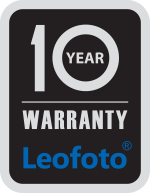|
LEE *Sev5n Solar Eclipse (207-GSOL)
A solar eclipse is such a rare and captivating phenomenon; it’s only natural to want to capture it in a sequence of photographs. However, when shooting a solar eclipse, even the lowest ISOs and fastest shutter speeds result in overexposed, blown-out images that fail to refl ect the fascinating process.As a result, a very strong, specialised fi lteris required in order to bring the exposurerange down to manageable levels. This is where the Solar Eclipse Filter from LEE Filters comes in. Available for the Seven5, 100mm and SW150 systems, the fi lter simply slots into the standard LEE Filters holder and you are ready to shoot. Prior to the event, we recommend following one of the many online guides to shooting an eclipse and practising in advance in orderto calculate your exposures and ensure the best possible results. The solar eclipse fi lter is designed solely for simple photography of solar eclipses or the surface of the sun. It is NOT suitable for general long-exposure landscape photography. It is also NOT intended as a viewing fi lter for solar events. Never look through the fi lter directly at the sun, as there is a risk of severe eye damage. How to use the Solar Eclipse Filter: 1. It is vitally important to avoid looking directly at the sun. To avoid any potential damage to eyes, use live view or an electronic viewfi nder to both to set up your composition and to watch the progress of the eclipse. (The camera should be switched off or live view disabled when not viewing or taking photographs, as damage to the sensor is possible even with a fi lter in place.) 2. Switch your lens to manual focus and set it to infi nity. This will prevent the lens from hunting once the fi lter is in place. 3. Slide the Solar Eclipse Filter into the holder. To avoid light leaks, the fi lter must be placed into the slot closest to the lens, with the foam seal facing the camera’s backplate. 4. Your starting exposure should be approximately 1/800sec at f/8 (ISO 800). Initially test the fi lter in clear conditions and bracket to fi nd which exposure gives the best results. 5. Use the Solar Eclipse Filter during the partial phases of the eclipse, but remove it during totality, otherwise your images will be underexposed. 6. After totality, the fi lter can be replaced to continue photographing as the moon moves clear of the sun. 7. As the Solar Eclipse Filter has been designed to fi lter out some of the sun’s harmful infrared rays, it is very blue in colour. This cast can be corrected in postproduction, or images converted to black and white. No accessories for this product. |
  |
||||||
ECommerce Integration by Yart
(Packing, handeling and shipping charges have been incorporated in the cost of these goods)
Today we are offering free freight in Australia on this product.Small items will ship via Australia post. All other products will ship via road freight or local couriers.This is a limited offer and subject to change at any time.
For Lab service products the return post or freight has been incorporated in the price and for Drop box only services there is NO freight applicable.
Close
















